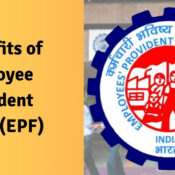NPS for NRIs: A Comprehensive Guide to Investing in India’s National Pension Scheme

India’s National Pension Scheme is a defined contribution pension system with voluntary participation. The National Pension Scheme, like the PPF and EPF, is an EEE instrument in India where the entire corpus is exempt from tax at maturity and the entire pension withdrawal amount is tax-free.
Oftentimes, it can be difficult to determine which of the numerous investment options available on the market best meets your needs. National Pension Scheme and Fixed Deposit are frequently regarded as popular and reliable investment options for a variety of financial goals.
Can NRIs Invest in NPS
Yes, NRIs can establish an NPS and even continue to contribute if their status changes from resident to NRI or vice versa.
Features of NPS
The key features are given below –
1. It is a scheme for voluntary contributions.
2. It facilitates retirement accumulation and investment.
3. The Pension Fund Regulatory and Development Authority (PFRDA) is responsible for collecting and investing the contributions of all account holders.
4. The NRI investor has two alternatives for investments:-
a. Active Choice: The NRI determines the asset classes in which the funds should be invested and the percentage allocation to each investment type.
b. Auto Selection: Investments are made on behalf of the NRI according to his age.
5. There are two subaccounts available under the plan:
a. Tier – I accounts: Withdrawals of up to 25% of the account holder’s contribution are permitted. There are regulations regarding withdrawal and exit options.
b. Tier-II accounts: These are supplementary to Tier-I accounts. Similar to savings accounts. An NRI may withdraw at any time from these accounts.
How NRIs can open an NPS in India?
1. You can obtain the form from the NPSCRA website. It is available at numerous banks and on their respective websites.
2. Complete the form and submit it with your supporting documentation to the bank where your NRE/NRO accounts are held. Additionally, a copy of the passport is required.
3. You’ll be issued a receipt number. Check the status of your application by visiting this website, NSDL. After the verification of the documents, you will receive a Permanent Retirement Account Number (PRAN).
4. You can then begin making deposits, reviewing your account, etc.
Rules Regarding Contribution and Withdrawal of the NPS for NRIs
1. The minimum contribution required to establish an account is ₹500 for Tier I and ₹1,000 for Tier II. The minimum annual contribution should be ₹1000. There is no utmost contribution amount.
2. The minimum annual contribution is ₹6,000.
3. At the age of 60, i.e., at the time of maturity, 60% of the accumulated corpus can be withdrawn tax-free as a single sum, while the remaining 40% must be invested in an annuity product from a PFRDA-listed insurance company. The annuity income you receive from the plan will be taxed at the rate applicable to your income tax bracket.
4. The withdrawal may be postponed until age 70. During this period, donations may be made.
5. If the total amount is less than or equal to ₹5,000,000, it must be withdrawn entirely
6. The purchase of an annuity may be delayed for up to three years.
7. If you withdraw before age 60, 80% must be invested in an annuity product, and if the corpus is less than Rs. 2,50,000, the entire amount must be withdrawn.
8. Up to 25% of the contribution can be withdrawn if you have been a subscriber for at least ten years and one of the following reasons applies: higher education, marriage of children, purchase of residence, or Treatment of certain diseases
9. If you are returning to India, you must end your NRI National Pension Scheme account.
Tax Benefits
Under section 80CCD(1B), you can deduct Rs. 50,000 from your taxable income in addition to the other 80C deductions.
Can NRI appoint nominees for NPS account?
When you open the account, you must designate a nominee. For Tier I and Tier II accounts, up to three candidates may be chosen.
Should NRIs Invest in NPS?
For NRIs in India, NPS is (one of) the national pension programs. On the surface, it appears to be a nice product that allows you to invest as much as you like and to choose how your assets are distributed across different asset classes. In contrast to many other investment plans, it offers tax benefits and accepts NRI investments.
The NRI must pay 20% or 30% of tax on it if he is in one of the higher tax brackets. This amount exceeds the LTCG that must be paid. Since you can’t quickly withdraw, it is illiquid.
If you are young, you are not sure where you will be living after your retirement, it does not make much sense.




